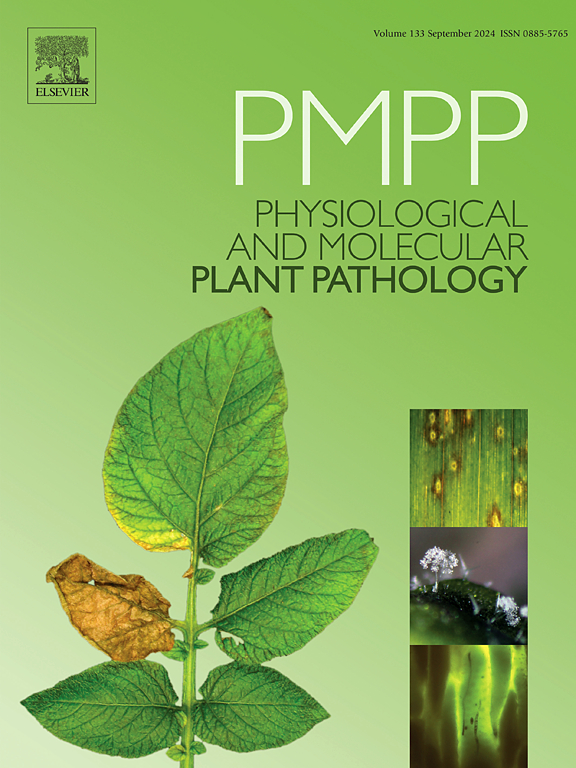Circular RNAs: Diversity, formation, functions, and identification mechanism with a focus on endogenous circular RNAs
IF 2.8
3区 农林科学
Q2 PLANT SCIENCES
引用次数: 0
Abstract
Circular RNAs (circRNAs) constitute a distinct class of noncoding RNAs (ncRNAs) defined by their covalently closed loop configuration, which confers exceptional stability against exonucleolytic degradation. Initially dismissed as splicing byproducts, circRNAs now have been established as critical regulators of gene expression across eukaryotic organisms. This review consolidates the current understanding of circRNAs biogenesis, diversity, and functional roles of endogenous circRNAs. Generated through back-splicing of pre-mRNA, circRNAs are classified into exonic, exon-intron, and intronic subtypes. Each of these exhibits unique subcellular localization and regulatory capabilities. In animal systems, circRNAs such as Drosophila melanogaster mbl-derived circRNAs and murine Sry circRNAs are implicated in growth regulation and testicular development, respectively. In humans, circRNAs like ciRS-7 serve as microRNA (miRNA) sponges, modulating neuronal development and contributing to pathologies such as Alzheimer's disease and atherosclerosis. Furthermore, circRNAs associated with NF-90/NF-110 play pivotal roles in immunological responses, influencing viral infection outcomes. In plants, circRNAs not only regulate developmental processes and stress adaptation, including auxin signaling, floral development, and fruit maturation. However, they also enhance resilience to biotic and abiotic stresses through their roles in rice disease resistance and tomato chilling tolerance. This review critically evaluates detection methodologies, including RNA-sequencing, RNase-R assays, and computational algorithms, highlighting their precision and inherent limitations. Despite significant advances, challenges persist in distinguishing functional circRNAs from artifacts and elucidating their molecular mechanisms. This review also highlights the evolutionary conservation and functional versatility of circRNAs, emphasizing their potential as biomarkers and therapeutic targets. Future investigations should prioritize the establishment of standardized databases and innovative approaches to deepen understanding of circRNA dynamics in eukaryotic systems, offering insights into their roles in health, disease, and agricultural productivity.
环状rna:多样性、形成、功能和识别机制,重点关注内源性环状rna
环状rna (circRNAs)是一类独特的非编码rna (ncRNAs),由其共价闭环结构定义,具有抗外核溶解降解的优异稳定性。circrna最初被认为是剪接的副产物,现在已被确定为真核生物中基因表达的关键调节因子。这篇综述巩固了目前对内源性环状rna的生物发生、多样性和功能作用的理解。circrna通过前mrna的反向剪接产生,分为外显子亚型、外显子-内含子亚型和内含子亚型。每一种都表现出独特的亚细胞定位和调节能力。在动物系统中,环状rna,如黑腹果蝇衍生的环状rna和小鼠的Sry环状rna,分别与生长调节和睾丸发育有关。在人类中,像ciRS-7这样的circrna作为microRNA (miRNA)海绵,调节神经元发育并促进阿尔茨海默病和动脉粥样硬化等病理。此外,与NF-90/NF-110相关的环状rna在免疫应答中发挥关键作用,影响病毒感染结果。在植物中,circrna不仅调节发育过程和逆境适应,包括生长素信号、花发育和果实成熟。然而,它们也通过在水稻抗病性和番茄抗寒性中的作用增强了对生物和非生物胁迫的抵御能力。这篇综述批判性地评估了检测方法,包括rna测序、rna - r测定和计算算法,强调了它们的准确性和固有的局限性。尽管取得了重大进展,但在区分功能性环状rna和人工产物以及阐明其分子机制方面仍然存在挑战。这篇综述还强调了circrna的进化保守性和功能多功能性,强调了它们作为生物标志物和治疗靶点的潜力。未来的研究应优先考虑建立标准化数据库和创新方法,以加深对真核系统中circRNA动力学的理解,从而深入了解它们在健康、疾病和农业生产力中的作用。
本文章由计算机程序翻译,如有差异,请以英文原文为准。
求助全文
约1分钟内获得全文
求助全文
来源期刊
CiteScore
4.30
自引率
7.40%
发文量
130
审稿时长
38 days
期刊介绍:
Physiological and Molecular Plant Pathology provides an International forum for original research papers, reviews, and commentaries on all aspects of the molecular biology, biochemistry, physiology, histology and cytology, genetics and evolution of plant-microbe interactions.
Papers on all kinds of infective pathogen, including viruses, prokaryotes, fungi, and nematodes, as well as mutualistic organisms such as Rhizobium and mycorrhyzal fungi, are acceptable as long as they have a bearing on the interaction between pathogen and plant.

 求助内容:
求助内容: 应助结果提醒方式:
应助结果提醒方式:


